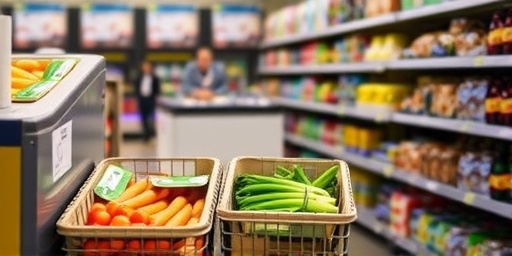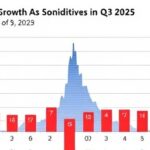As the U.S. government teeters on the edge of a shutdown, millions of low-income families face the grim prospect of delayed or disrupted SNAP benefits just before the holiday season. With funding set to expire on October 31, 2025, the Supplemental Nutrition Assistance Program (SNAP), which supports 42 million Americans, could see payments for November 2025 halted, exacerbating food insecurity amid rising inflation and economic pressures.
SNAP Funding Freeze: What Happens If Payments Stop
The government shutdown, triggered by partisan disagreements over budget priorities, poses an immediate threat to the nation’s largest food assistance program. SNAP benefits, often loaded onto Electronic Benefit Transfer (EBT) cards, provide crucial monthly support for groceries to eligible low-income households. According to the U.S. Department of Agriculture (USDA), which administers SNAP, a prolonged shutdown could prevent the processing and distribution of these benefits, leaving recipients without access to funds starting November 1, 2025.
Experts estimate that in a worst-case scenario, up to 42 million individuals—about one in eight Americans—could be affected. This includes 20 million children and 9 million seniors who rely on SNAP to stretch their budgets. “The timing couldn’t be worse,” said Dr. Elena Ramirez, a policy analyst at the Center on Budget and Policy Priorities (CBPP). “November is when families are planning for Thanksgiving and winter needs, and a disruption here could push many into deeper poverty.”
Historically, during the 2018-2019 shutdown, SNAP payments were delayed for some states, leading to emergency measures like borrowing from future funds. But with federal employees furloughed and systems offline, similar workarounds may not be feasible this time. The USDA has warned that state agencies, already stretched thin, might face backlogs lasting weeks, forcing families to ration food or seek charitable aid.
Local Economies Feel the Pinch from Reduced Grocery Spending
Beyond individual hardships, the potential halt in SNAP benefits could deliver a body blow to local economies nationwide. SNAP injects approximately $120 billion annually into the economy, with every dollar spent generating up to $1.50 in economic activity through grocery purchases. In November 2025 alone, an estimated $10 billion in benefits could go undisbursed, directly impacting supermarkets, farmers’ markets, and small grocers in rural and urban areas alike.
Take rural communities in the Midwest, where SNAP spending accounts for 10-15% of local grocery revenue. Owners of independent stores report anxiety over potential sales drops. “We’ve seen this before—when benefits are late, shelves go empty, and we’re left with unsold produce,” shared Tom Harlan, manager of a family-owned market in Iowa. Data from the Food Research & Action Center (FRAC) shows that shutdown-induced delays in past years led to a 5-7% dip in food retail sales in affected regions, straining jobs and supply chains.
Urban areas aren’t immune either. In cities like Detroit and Los Angeles, where food deserts are prevalent, SNAP drives demand for affordable staples. A freeze could ripple through wholesalers and even agricultural producers, as reduced demand hits farm incomes. Economists at the Brookings Institution project that a one-month delay might shave 0.1% off GDP growth in the fourth quarter of 2025, underscoring how food assistance underpins broader economic stability.
- Key Economic Impacts: Reduced foot traffic in stores, potential layoffs in retail, and slowed agricultural output.
- Vulnerable Sectors: Small businesses, which make up 80% of SNAP retailers, face the brunt.
- Longer-Term Effects: Increased reliance on food banks, which are already reporting 20% higher demand post-pandemic.
Political Standoff: Lawmakers Deadlocked on Budget Deal
The root of the crisis lies in Congress’s failure to pass a continuing resolution to fund the government beyond the fiscal year deadline. Republicans, pushing for spending cuts in social programs, have clashed with Democrats advocating for expanded food assistance amid ongoing inflation. House Speaker Kevin McCarthy (R-CA) blamed the impasse on “wasteful entitlements,” while Senate Majority Leader Chuck Schumer (D-NY) countered that “starving families to score political points is unacceptable.”
Negotiations have dragged on for weeks, with the latest round collapsing over disagreements on SNAP eligibility reforms. The program, reauthorized under the Farm Bill every five years, faces scrutiny for alleged fraud, though USDA audits show error rates below 5%. Advocacy groups like Feeding America have mobilized, urging lawmakers to prioritize vulnerable populations. “This isn’t just about budgets; it’s about basic human dignity,” stated their CEO, Claire Babineaux-Fontenot, in a recent press conference.
White House officials have floated emergency funding options, but legal experts doubt their viability without congressional approval. As the October 31 deadline looms, pressure mounts from governors across party lines, with 15 states already declaring states of emergency for food aid if the shutdown occurs.
Families on the Front Lines: Stories of Anticipated Hardship
For the millions dependent on SNAP, the uncertainty translates to real fear. Single mother Maria Gonzalez, a recipient in Texas, shared her concerns: “I have three kids, and without that EBT card, I don’t know how we’ll eat. Prices are up 20% this year, and my job barely covers rent.” Gonzalez’s story echoes thousands: SNAP lifts 8 million people out of poverty annually, per Census data, but a shutdown could reverse those gains.
In Appalachia, where unemployment hovers at 6%, communities are bracing for worse. Local food pantries, serving 50 million meals yearly, anticipate a surge in demand. “We’re already at capacity,” said volunteer coordinator Lisa Thorne from a Kentucky nonprofit. “A benefits freeze would overwhelm us—imagine lines wrapping around blocks for canned goods and bread.”
Health implications are stark too. Studies from the Journal of the American Medical Association link SNAP disruptions to higher rates of malnutrition, diabetes, and mental health issues. Children, in particular, suffer: missing meals can impair cognitive development, with long-term costs to society exceeding $100 billion in lost productivity.
- Personal Coping Strategies: Many families are stockpiling non-perishables, but perishable needs like milk and meat remain challenging.
- Community Responses: Faith-based groups and schools are organizing drives, but scalability is limited.
- Equity Concerns: Minority households, who comprise 40% of SNAP users, face disproportionate risks due to systemic barriers.
Advocates highlight that SNAP’s efficiency—delivering 99% of benefits within 30 days of application—makes it a model program, yet it’s now collateral in fiscal battles.
Path Forward: Averting Crisis Through Bipartisan Action
As November 2025 approaches, the stakes couldn’t be higher for resolving the government shutdown. Bipartisan talks, mediated by the Senate Appropriations Committee, aim to unlock a short-term funding bill by week’s end, potentially safeguarding SNAP benefits. However, experts warn that even a brief delay could cost states millions in administrative fees and lost economic output.
Looking ahead, the full Farm Bill renewal in 2025 offers a chance for comprehensive reforms, including tech upgrades to SNAP distribution and anti-fraud measures. Nonprofits urge public involvement: petitions have garnered over 500,000 signatures calling for priority funding. If resolved swiftly, the crisis could bolster support for food assistance, reminding policymakers of its role in economic resilience.
Yet, without action, the fallout could linger into 2026, deepening divides in an already polarized landscape. Families, businesses, and lawmakers alike await a breakthrough that prevents November’s benefits from becoming a casualty of Washington gridlock.









